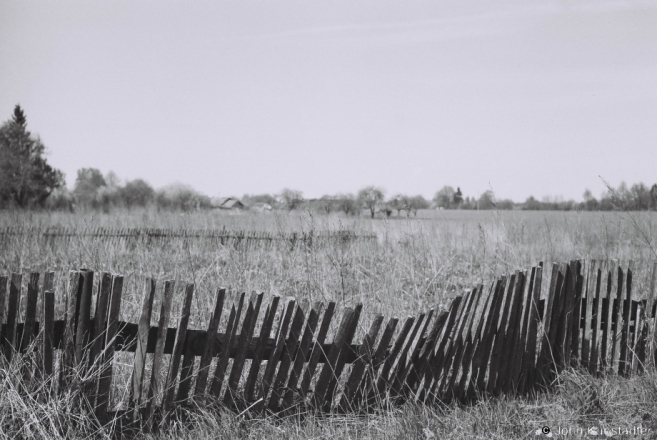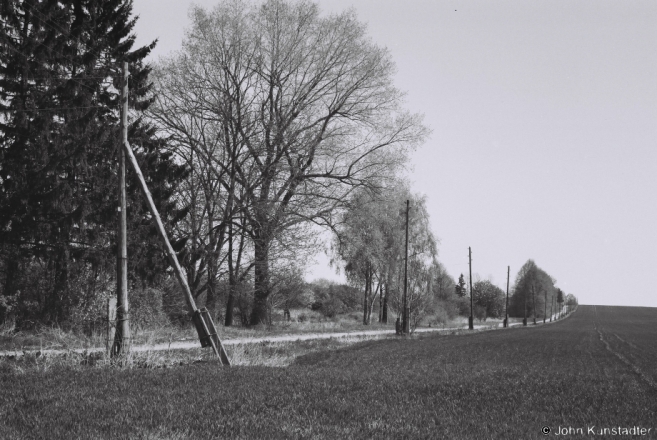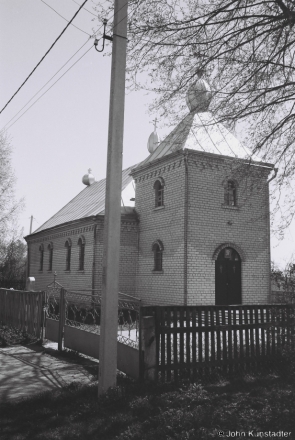У радыусе менш за 20 кіламетраў ад Ляхавічаў па Ляхавіцкім, Баранасіцкім і Клецкім раёнах знаходзіцца прынамсі 12 этнатапонімаў, якія адлюструюць некалькі з этнаграфічных слаёў адметнай культурнай спадчыны беларускай нацыі: Ятвезь, Вялікая Лотва, Літва, Туркі, Сакуны, Ляхавічы, Русінавічы, Жомайдзь, Мазуркі, Цыгань, Літоўка ды Русіно. На працягу наступных двух тыдняў Radzima Photo будзе паказваць дзымкі з веснавой вандроўкі па гэтых 12і гарадах ды вёсках. Пачынаем з вёскай Ятвезь (Баранавіцкі раён).
Overshadowed by by 450 years of Russian state imperialism and by more ebullient expressions of Polish, Ukrainian and Lithuanian nationhood, Belarusian nationhood is nevertheless as rooted and specific to itself as the other three. One of the marks of the rich texture and organic development of the Belarusian nation is the number and location of ethnotoponyms — towns and villages with place names referring to ethnic, tribal or geographic identity of peoples who settled in the region from the early Middle Ages to medieval times. The area of Ljakhavichy, Baranavichy and Kletsk Districts in western Belarus is notable in this regard. In a radius of less than twenty kilometers (12 miles) from Ljakhavichy there are at least a dozen ethnotoponyms reflecting some of the tribes and ethnic groups out of which the Belarusian nation formed itself:
Ruthenian/Rus’: Rusino (Русіно), Rusinavichy (Русінавічы);
Polish: Ljakhavichy (Ляхавічы), Mazurki (Мазуркі);
Other Slavic: Sakuny (Сакуны);
Baltic: Jatvjez’ (Ятвезь), Zhomajdz’ (Жомайдзь), Litva (Літва), Vjalikaja Lotva (Вялікая Лотва), Litouka (Літоўка);
as well as Tatar (Turki/Туркі) and Gypsy (Tsyhan’/Цыгань)
Normally one finds an ethnotoponym as a sign that a village of one ethnic group was surrounded by villages of another, more numerous ethnic group or tribe. What the concentration of various ethnotoponyms around Ljakhavichy and Baranavichy reflects is the intense interest in settling this area on both sides of the River Shchara (Шчара), a major left-hand tributary of the River Njoman (Нёман), and how thoroughly mixed the major groups became.
The photos over the next two weeks follow the itinerary of a day-long mid-spring expedition to these twelve towns and villages. We start here with Jatvjez’ (Baranavichy District), one of several such-named villages in Belarus. The Jatvjez’ (Jats’vjahi – Яцьвягі) were a Baltic-language tribe whose area of settlement included what are now large portions of western Belarus. Jatvjez’ in Baranavichy District contains two parallel main streets, unusually widely-separated by cultivated fields.
The Orthodox church of St. George, built in 1994, has traditional vernacular-style cupolas instead of the unfortunate and alien golden onion domes which the Moscow Patriarchate-dominated Orthodox Church in Belarus is intent on imposing on new and historic churches alike. Царква Сьв. Юр’я (1994 г.), з укаранелымі ў беларускіх традыцыях бунькамі замест іншаземных залатых цыбулінаў.



A fascinating history lesson with illustrations. thank you!
Thank you. 🙂
На Ваўкавышчыне так сама ёсць вёска Ятвезь, на Свіслоччыне ёсць Ятвеск, а я нарадзіўся ў вёсцы Крыўск
Вы сапраўды крывіч, спадар Улад! Па дарозе з Ваўкавыску ў Менск заехаў у вёскі Крывічы (Зэльвенскі р.), Ятвезь (Дзятлаўскі р.) і Крывічы (Іўеўскі р.). Трэба будзе наведваць ваўкавыскі Ятвезь разам у жніўні.